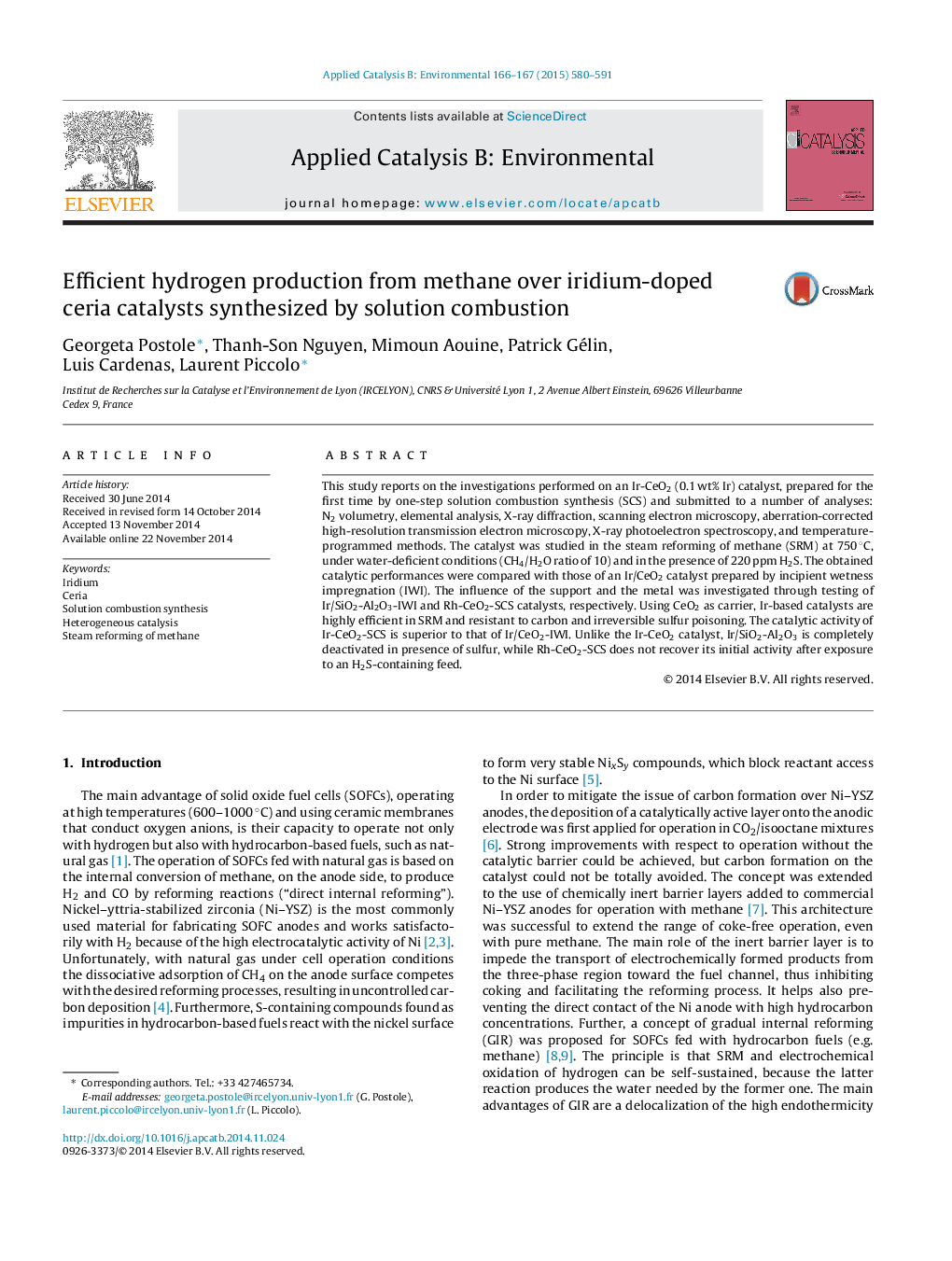| Article ID | Journal | Published Year | Pages | File Type |
|---|---|---|---|---|
| 45753 | Applied Catalysis B: Environmental | 2015 | 12 Pages |
•Ir-CeO2 (0.1 wt% Ir) was prepared by one-step solution combustion synthesis.•2 nm-sized particles of Ir are obtained after an oxido-reducing treatment.•Ir-CeO2, highly active in CH4 reforming, is resistant to the irreversible poisoning by H2S.•This catalyst outperforms its Ir-impregnated and Rh-containing counterparts.
This study reports on the investigations performed on an Ir-CeO2 (0.1 wt% Ir) catalyst, prepared for the first time by one-step solution combustion synthesis (SCS) and submitted to a number of analyses: N2 volumetry, elemental analysis, X-ray diffraction, scanning electron microscopy, aberration-corrected high-resolution transmission electron microscopy, X-ray photoelectron spectroscopy, and temperature-programmed methods. The catalyst was studied in the steam reforming of methane (SRM) at 750 °C, under water-deficient conditions (CH4/H2O ratio of 10) and in the presence of 220 ppm H2S. The obtained catalytic performances were compared with those of an Ir/CeO2 catalyst prepared by incipient wetness impregnation (IWI). The influence of the support and the metal was investigated through testing of Ir/SiO2-Al2O3-IWI and Rh-CeO2-SCS catalysts, respectively. Using CeO2 as carrier, Ir-based catalysts are highly efficient in SRM and resistant to carbon and irreversible sulfur poisoning. The catalytic activity of Ir-CeO2-SCS is superior to that of Ir/CeO2-IWI. Unlike the Ir-CeO2 catalyst, Ir/SiO2-Al2O3 is completely deactivated in presence of sulfur, while Rh-CeO2-SCS does not recover its initial activity after exposure to an H2S-containing feed.
Graphical abstractFigure optionsDownload full-size imageDownload as PowerPoint slide
